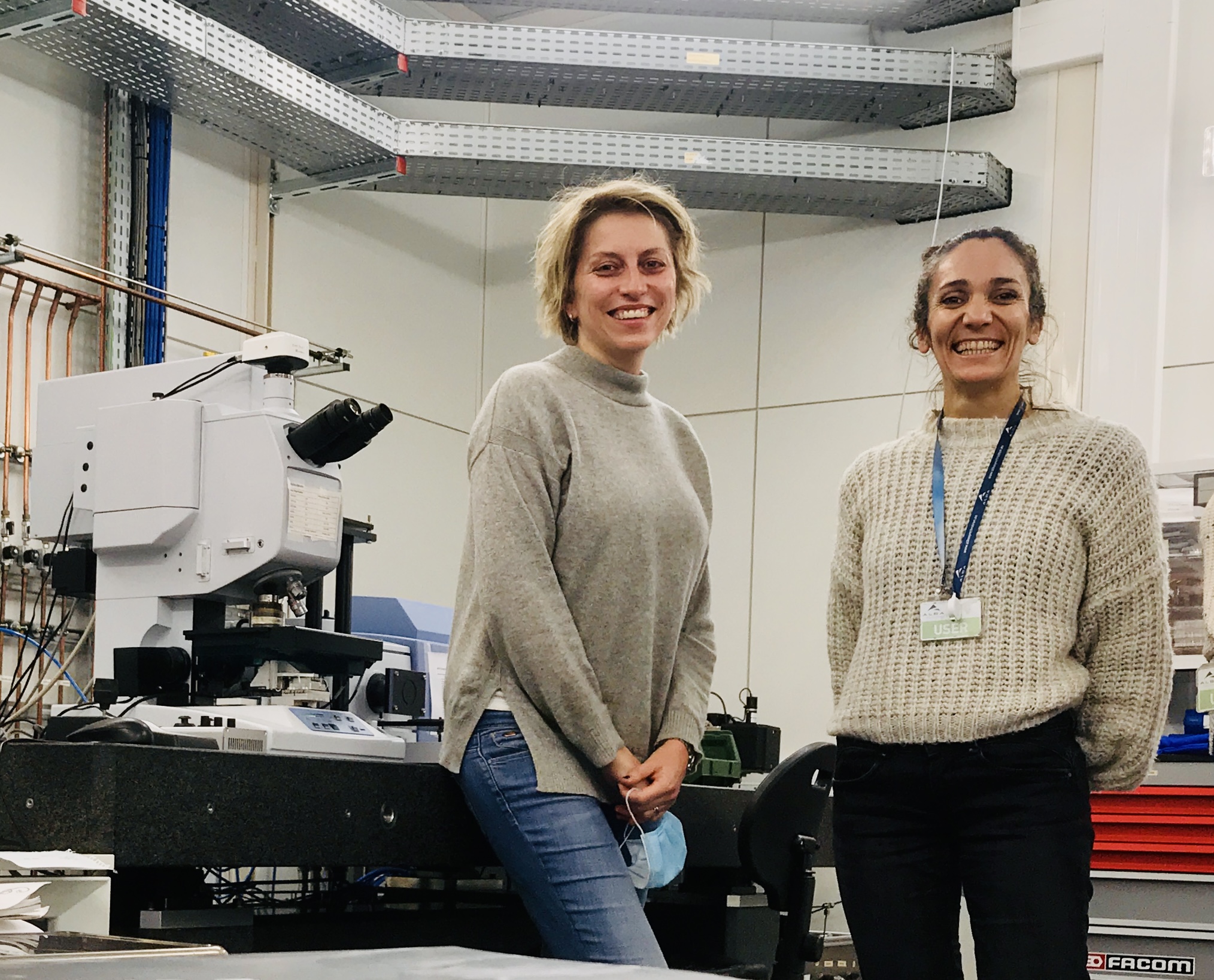ALBA Synchrotron

Using synchrotron-based Fourier transform infrared (SR-FTIR) microspectroscopy, scientists from the University of Málaga, Dr. Elena Gonzalez-Muñoz and Dr. Tanja Ducic from the ALBA Synchrotron, have identified distinctive biochemical fingerprints that define cell identity during early human differentiation. By analyzing 3D cell organoids derived from human induced pluripotent stem cells (hiPSCs), the study reveals that cell identity arises from the interplay between gene expression and unique combinations of macromolecule structures and conformations, including DNA, lipids, and proteins. Published in Frontiers in Cell and Developmental Biology, these findings advance our understanding of human development and underscore the value of SR-FTIR in studying complex multicellular systems (organoids) as models for health and disease.
Understanding how human cells acquire specific identities, particularly in neural development, remains a significant challenge due to limited access to embryonic tissues and the differences observed in animal models. Traditional 2D cell cultures lack the complexity of actual tissues and fail to replicate essential cell-cell and cell-matrix interactions. Recent advancements in 3D organoids derived from hiPSCs offer new opportunities to study models of early tissue development and disease in vitro. However, these systems require more holistic, integrative tools to capture cellular transformations beyond gene and protein markers. In this context, FTIR microspectroscopy presents a promising, label-free technique for monitoring molecular changes in situ.
This study is the result of a long-term collaboration between Tanja Dučić from the ALBA Synchrotron and Elena Gonzalez-Muñoz from the Department of Cell Biology, Genetics, and Physiology at the University of Málaga.
In this research, two types of 3D stem-cell-derived organoids were prepared to model distinct differentiation pathways. Embryoid bodies (EBs) underwent spontaneous differentiation, generating cells from all three germ layers: endoderm, mesoderm, and ectoderm. In contrast, neural spheroids (NSs) were produced using a directed protocol to form a complex neural lineage, including neurons, astrocytes, and oligodendrocytes. These complementary models allowed researchers to compare spontaneous, multipotent differentiation with targeted, lineage-specific development under controlled conditions.
To explore molecular differences between the models, researchers analyzed thousands of FTIR spectra from multiple biological replicates of NSs and EBs derived from three independent hiPSC clones, ensuring statistical and experimental reliability. The high-intensity, broad-spectrum, and coherent infrared light produced by the MIRAS beamline at the ALBA Synchrotron enabled high-resolution spectral acquisition, enhancing the detection of subtle biochemical differences in complex, heterogeneous samples.
The team identified consistent molecular differences between the two organoid types in key spectral regions corresponding to lipids, proteins, and nucleic acids, reflecting not only gene expression but also the structural and compositional features of major biomolecules. Notably, NSs exhibited increased lipid unsaturation and the presence of Z-form DNA, a non-canonical DNA conformation associated with epigenetic regulation during neural development. Additionally, the two organoid types differed in their protein composition: neural spheroids contained more α-helical protein conformations, while embryoid bodies exhibited a higher content of β-sheets. These differences may influence how the tissues function or respond to challenges during development.
These findings demonstrate that human cell identity during early differentiation is defined by both gene expression and distinct biochemical features — including DNA structural variants, lipid composition, and protein conformations — that actively shape and maintain cellular states.
By applying synchrotron-based FTIR microspectroscopy to human 3D organoid models, the researchers provide a more comprehensive perspective on how cell fate emerges from the complex interplay of genetic, metabolic, and epigenetic mechanisms within physiologically relevant multicellular environments.
This study addresses a critical gap in developmental biology and offers a non-invasive approach to studying human neural development, paving the way for future advances in disease modeling, drug development, regenerative medicine, and stem cell quality control. Ultimately, its outcomes reinforce the significance of biochemical composition as a traceable and functional hallmark of cellular identity, opening new avenues for investigating human development and disease at a molecular systems level.

Figure: A: Fluorescence microscopy of cell marker characteristics for NS and EB 3D organoids differentiated from human iPSC lines. Immunofluorescence analysis image of markers of mesoderm (MYF5), GATA4 and AFP for endoderm, MBP for oligodendrocytes, GFAP for astrocytes, DCX, and NESTIN for neuronal progenitors and early neurons (scale bar 100 μm). B: Grouping of neural spheroid (NS) and embryoid body (EB) organoids based on their chemical “fingerprints” FTIR spectra using clustering and heatmaps.